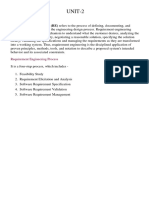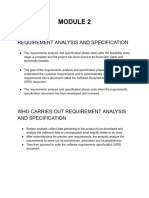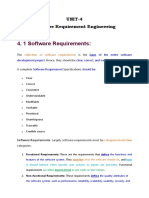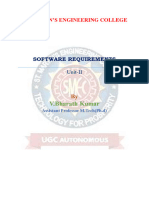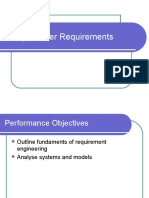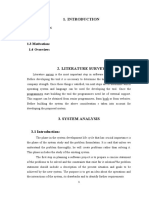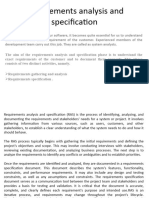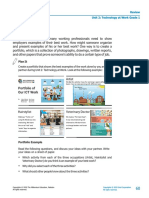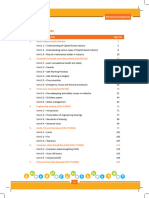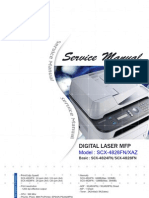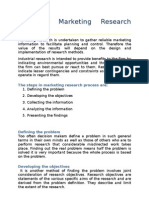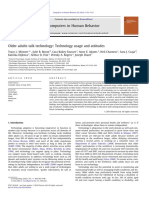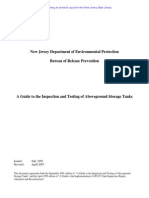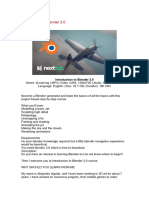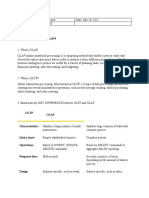0% found this document useful (0 votes)
37 views7 pagesUnit 4 Software Requirement Analysis
The document outlines the process of software requirement analysis and specification, detailing requirement engineering, elicitation techniques such as interviews and brainstorming, and requirement analysis methods including data flow diagrams and entity-relationship diagrams. It emphasizes the importance of a well-structured Software Requirements Specification (SRS) that is complete, correct, consistent, and testable. Additionally, it provides guidelines on the organization and characteristics of a good SRS to ensure clarity and comprehensiveness for stakeholders.
Uploaded by
surajkumar97thCopyright
© © All Rights Reserved
We take content rights seriously. If you suspect this is your content, claim it here.
Available Formats
Download as PDF, TXT or read online on Scribd
0% found this document useful (0 votes)
37 views7 pagesUnit 4 Software Requirement Analysis
The document outlines the process of software requirement analysis and specification, detailing requirement engineering, elicitation techniques such as interviews and brainstorming, and requirement analysis methods including data flow diagrams and entity-relationship diagrams. It emphasizes the importance of a well-structured Software Requirements Specification (SRS) that is complete, correct, consistent, and testable. Additionally, it provides guidelines on the organization and characteristics of a good SRS to ensure clarity and comprehensiveness for stakeholders.
Uploaded by
surajkumar97thCopyright
© © All Rights Reserved
We take content rights seriously. If you suspect this is your content, claim it here.
Available Formats
Download as PDF, TXT or read online on Scribd
/ 7







